Do you have a question about the Epson TM-m30II and is the answer not in the manual?
| Type | POS printer |
|---|---|
| Character sets | ANK |
| Print technology | Direct thermal |
| Maximum resolution | 203 x 203 DPI |
| Maximum roll diameter | 83 mm |
| Supported paper width | 58 mm - 80 mm (Breite) mm |
| Maximum printing width | 80 mm |
| Power plug type | Type G |
| Power source type | AC |
| USB port | Yes |
| USB connector | USB Type-A / USB Type-B |
| USB 2.0 ports quantity | 2 |
| Connectivity technology | Wired |
| Storage temperature (T-T) | -20 - 60 °C |
| Operating temperature (T-T) | 5 - 45 °C |
| Operating relative humidity (H-H) | 10 - 90 % |
| Wi-Fi | No |
| Internal memory | - MB |
| Built-in barcodes | - |
| Country of origin | Philippines |
| Mounting position | Horizontal/Vertical |
| Autocutter durability | 1.5 million cuts |
| Built-in sensors details | Paper End Sensor, Papier-Sensor |
| Sound pressure level (printing) | 55 dB |
| Mean time between failures (MTBF) | 360000 h |
| Product color | White |
| Print head life | 150.000.000 Impulse |
| Mean cycles between failures (MCBF) | 65000000 |
| Pre-installed software | TMNet WebConfig, ePOS-Device, ePOS-Display, ePOS-Print |
| Package depth | 240 mm |
| Package width | 200 mm |
| Package weight | 2150 g |
| Quantity per pack | 1 pc(s) |
| Quantity per pallet | 128 pc(s) |
| Quantity per pallet (UK) | 192 pc(s) |
| Master (outer) case width | 400 mm |
| Master (outer) case height | 255 mm |
| Master (outer) case length | 490 mm |
| Master (outer) case weight | 0 g |
| Harmonized System (HS) code | 84433210 |
| Quantity per master (outer) case | 4 pc(s) |
| Width | 127 mm |
|---|
Describes the printer's capabilities and characteristics, including printing speed and handling.
Details on the physical aspects and ease of use, including dimensions and paper loading.
Overview of software-related functions and features, like NFC tag and utility support.
Explains different models and options available for the printer.
Lists included and optional accessories for the printer.
Identifies printer components and their roles, with diagrams.
Explains the status indicators (LEDs) and their meanings.
Details the available ports on the printer and their uses.
Describes how to interpret printer status and error conditions via LEDs.
Explains memory areas for storing data, including graphics and settings.
Guide to setting up wireless connectivity easily using SimpleAP mode.
How to use various connection interfaces simultaneously for printing.
Outlines the sequence for product and peripheral setup.
Instructions for physically placing the printer in top or front eject positions.
How to adjust the printer for different paper sizes using roll paper guides.
Steps to connect the printer to a Wi-Fi network using the optional unit.
Guide to connecting a customer display via USB.
Instructions for connecting a cash drawer and its specifications.
Steps to connect the printer to the power supply using the AC adapter.
Guide for connecting the printer to computers or smart devices via USB, Ethernet, or Wi-Fi.
How to configure printer settings using a mobile device via Wi-Fi.
Detailed setup procedures for connecting the printer via Bluetooth.
How to activate the function for detecting low paper status.
Configuring various printer functions using memory switches and customized values.
Adjusting the darkness of printed output for optimal quality.
Setting the printer's operational speed from levels 1 to 13.
Procedures for connecting the printer to a network using various methods.
Accessing diagnostic and configuration modes like self-test and interface setup.
Running internal diagnostics to check product name, firmware, and status.
Resetting printer settings and memory switches to their factory defaults.
Configuring and managing printer interfaces, including initialization.
How to print current printer configuration and status information.
Information on commanding the printer's functions using ePOS-Print XML and ESC/POS.
Details on development kits, libraries, and sample programs provided.
Information on available printer drivers for different operating systems.
Tools for printer setup, management, status display, and firmware updates.
Guidelines and recommendations for printing barcodes and QR codes.
Step-by-step guide for loading roll paper into the printer.
Procedures for safely clearing paper jams from the printer.
Instructions for maintaining the printer's case and thermal head.
Steps for safely preparing the printer for shipping or moving.
How to remove and attach the rear and bottom covers for access.
Detailed technical data including printing, interface, and power specifications.
Specifics on printing capabilities like dot density, width, and speed.
Information on supported character sets, codes, and dot sizes per character.
Details on compatible paper types, sizes, and thickness.
Physical size and measurements of the printer in millimeters.
Technical details of USB, Ethernet, and Wi-Fi connection ports and protocols.
Specifications for Ethernet and Wi-Fi connections, including protocols and parameters.
Technical details for Bluetooth connectivity, including security and auto-reconnect.
Technical specifications for the NFC tag functionality, including frequency and memory.
How various devices can connect to the printer's USB Type-A connector.
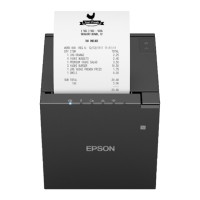
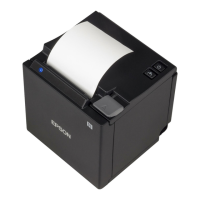
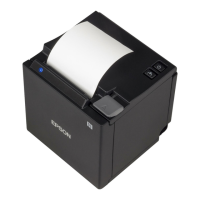
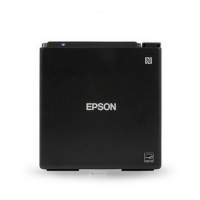
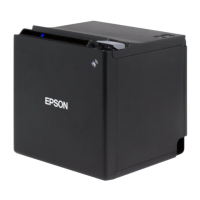

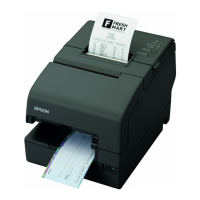
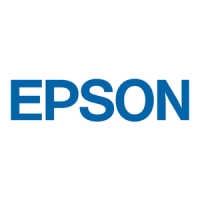
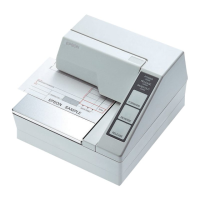

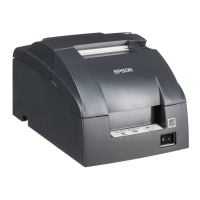

